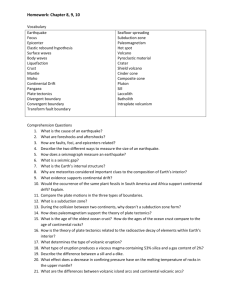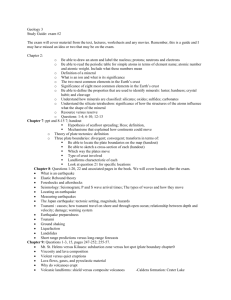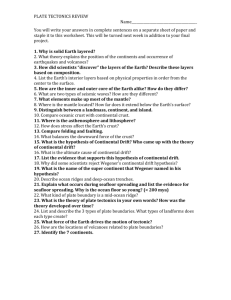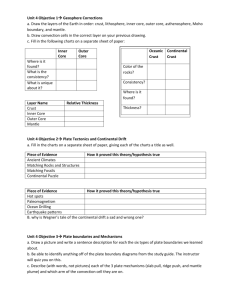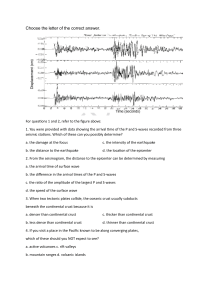Earth Structure and Plate Tectonics
advertisement
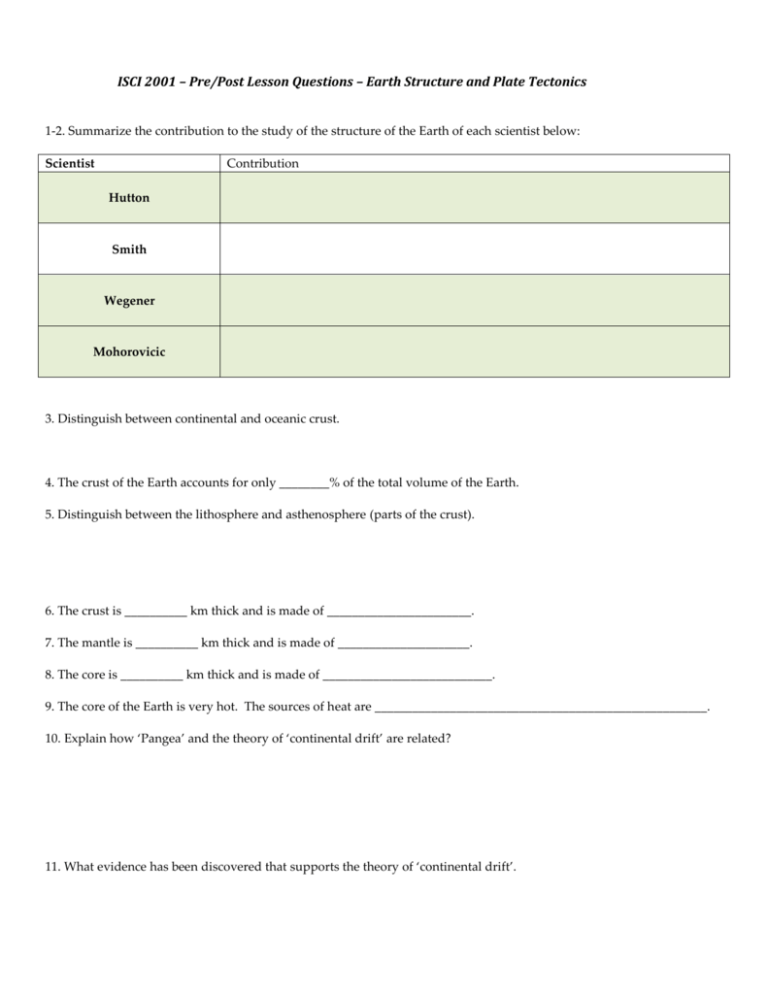
ISCI 2001 – Pre/Post Lesson Questions – Earth Structure and Plate Tectonics 1-2. Summarize the contribution to the study of the structure of the Earth of each scientist below: Scientist Contribution Hutton Smith Wegener Mohorovicic 3. Distinguish between continental and oceanic crust. 4. The crust of the Earth accounts for only ________% of the total volume of the Earth. 5. Distinguish between the lithosphere and asthenosphere (parts of the crust). 6. The crust is __________ km thick and is made of _______________________. 7. The mantle is __________ km thick and is made of _____________________. 8. The core is __________ km thick and is made of ___________________________. 9. The core of the Earth is very hot. The sources of heat are _____________________________________________________. 10. Explain how ‘Pangea’ and the theory of ‘continental drift’ are related? 11. What evidence has been discovered that supports the theory of ‘continental drift’. 12. Explain why the existence of the Mid-Atlantic Ridge is evidence for the theory of continental drift. 13. The _________________ of the crust are divided into (8) pieces. Each one is called a ________________. They ‘ride’ or float atop the ____________________ part of the crust. 14. Explain how and why the plates move. 15. In a ________________ plate boundary, these plates move away from each other. They produce _____________ spreading. 16. _____________ plate boundaries collide with each other. One plate descends under another plate. This is referred to as ________________. 17. Describe the most important characteristics of each type of convergence zone below: (a) Oceanic-Oceanic (b) Oceanic-Continental (c) Continental-Continental 18. The _________________ trench is the deepest in the world at ________________m or ______________miles. 19. _______________ plate boundaries form faults. 20. A very famous fault is found in California called the ___________________. 21. During an earthquake the epicenter is ___________________________________________________, the focus is the ______________________________________________________________. 22. An intraplate earthquake _____________________________________________________________________ and an interplate earthquake _____________________________________________________. Examples of an intraplate EQ are ________________________ and a inter-plate EQ are _____________________________________________________. 23. A tsunami is ________________________________________________________________________________________. The causes of a tsunami are ___________________________________________________. 24. The study of seismic waves is called ________________________________. 25. The two main types of waves are called ________________ and _______________ waves. Describe each one. 26. Distinguish between P and S waves. 27. What is the Richter scale? What does it measure? List the values of the Richter Scale and 28. Describe the forces that cause an earthquake to occur.
